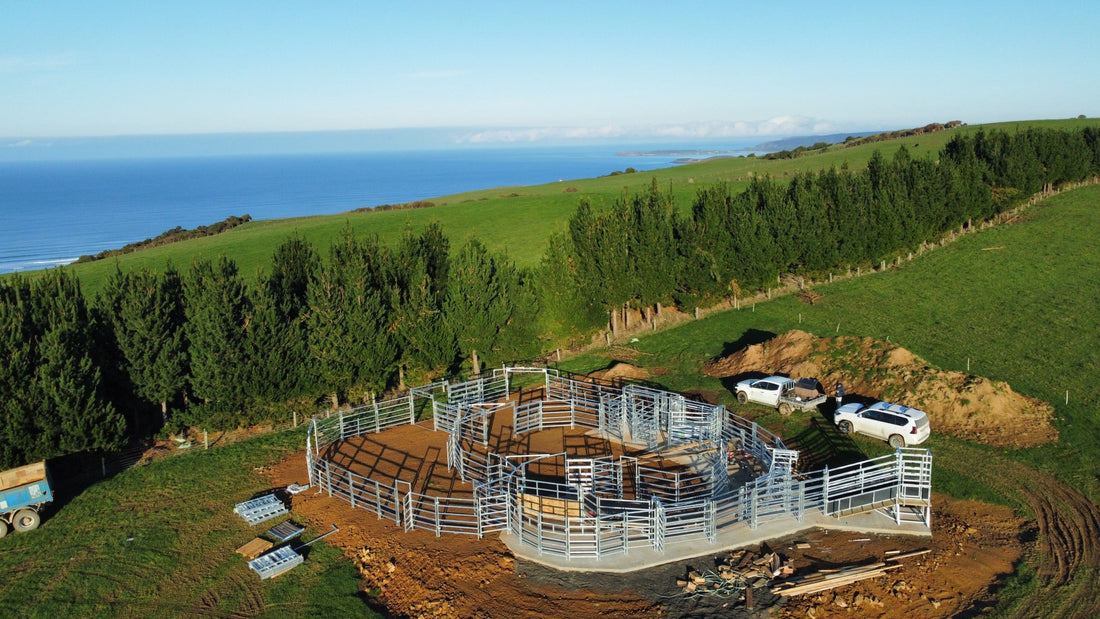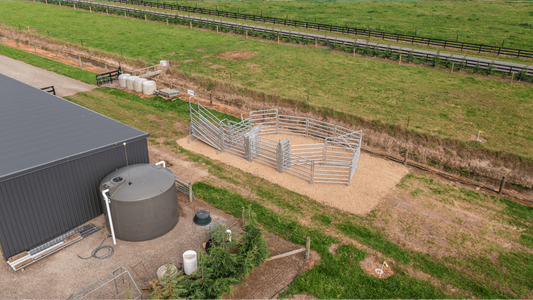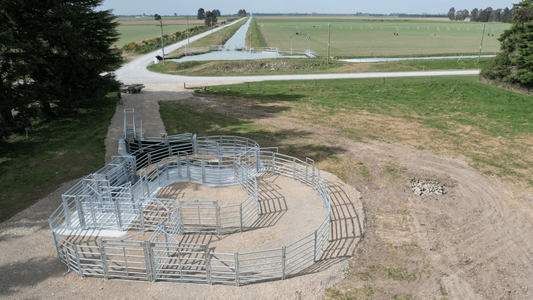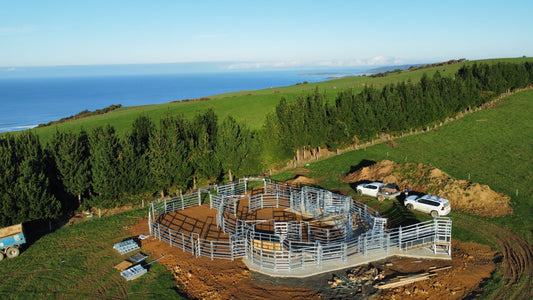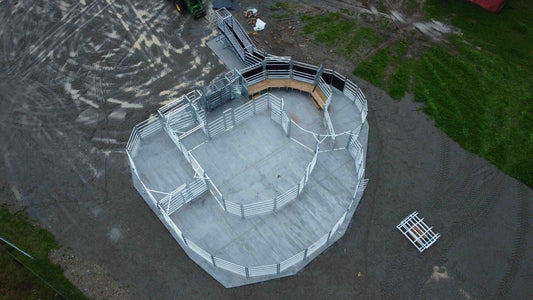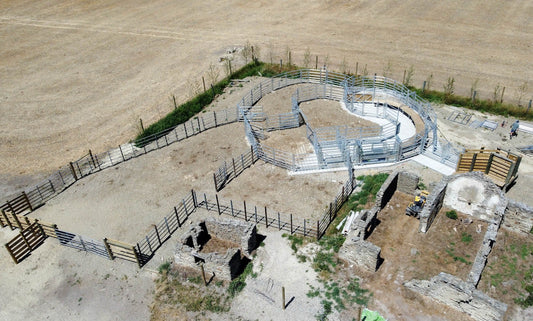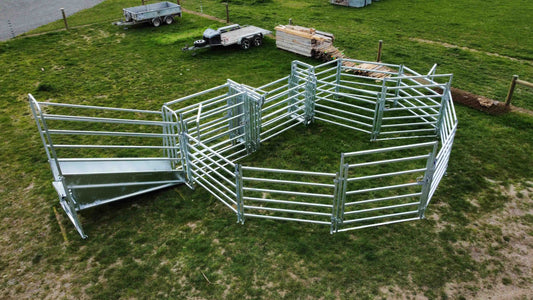Cameron Clark embarked on his search for the perfect Cattle Yard after seeing what we had done for his neighbour, Lindsay Cooper. About a year earlier, we had customised a 120 head yard for Lindsay. Often, farmers trust the experiences of their neighbours, making a simple visit or chat about a recent purchase the base for their own decisions.
Impressed by the quality of Lindsey's yard and reassured by his praise about our services, Cameron reached out to us. As per our usual consultation process, we learned about Camerons operation and suggested a few of our designs that would do the trick; which in this case were our 120 and 186 head designs.
Here's what Cameron had to say about working with Onefarm:
“I can’t really fault you. Well communicated and it’s made life easy really. They’re solid as, and everything went to plan and without a hiccup.”
Yard Location Details
Cameron formerly owned a large farm in The Catlins. After deciding to sell half of it, he was left with the portion that didn’t have a set of cattle yards, meaning Cameron was in line for a nice shiny new set.
The selected site was strategically positioned at the heart of the farm, providing easy access from all laneways. The site's natural terrain was largely flat, reducing the need for extensive groundwork. While an amount of levelling was required, it was within typical expectations.

Vehicle Accessibility for Stock Trucks and Work Vehicles
The farm already featured an established road leading to the yards, eliminating the need for any extensive roading work. That said, a site was further developed to enable stock trucks to easily access the yards. All aspects were thoughtfully planned and executed.
Installation Process and Groundwork
While Cameron undertook much of the preliminary groundwork, the concreting, boxing up, and pouring were managed by Shane's team, Toko Contracting. They have consistently delivered outstanding work for us in the Otago/Southland region, and this project was no exception.
Deciding on the 186 Over the 120
Cameron initially considered the commercial 120 head design. However, given the special pricing we offered at that time, it made more financial sense to consider a larger yard.
The major advantage of the 186 over the 120 was its increased efficiency given Camerons mob sizing. While the general layout between the two yards is very similar, the 186 offers larger working pens. It has an extended race, which is about four meters longer making likes of pour on drenching that much easier. The working pens in the 186 are larger, and the races are longer, facilitating smoother operations. Cameron's feedback post-installation has been overwhelmingly positive regarding this choice.
“The Cattle were just a bit standoffish the first time- That would be the case in any yards. After they’d been through once, they flew through the next time.“

Components of the 186 Yard
The 186 yard consists of three spacious working pens. It also includes a circular forcing pen, capable of holding about 17 head, leading into a seven-section (14m) race. Instead of a Vet crush, we opted for a Gryphon Vetless, which was more suited to Cameron’s needs. Lastly, the package was rounded off with our Commercial loading ramp.
Circular Forcing Pen: An Overview
The circular forcing pen is designed to be safe, especially for individuals working alone in the cattle yards. Its design promotes an efficient flow, enabling cattle to move smoothly and swiftly through the race. Unlike traditional funnel-shaped pens, the circular design fosters a more intuitive movement for the cattle.
“Yeah, that Circular Forcing Pen is the business. Everything went smoothly and great communication from you.”
What Sets Our Design Apart
Our circular forcing pen stands out because it avoids any ground obstructions. Instead of overhead and ground bracing, we use a circular forcing post embedded deep into the concrete. This method not only ensures the post's stability but also negates the need for any bracing on the ground or overhead. Consequently, there are no tripping hazards for either the operator or the cattle. This clean design is a marked preference for many, in contrast to yards cluttered with ground bracing.
The Commercial Loading Ramp
Our commercial loading ramp is distinctly designed for efficiency and durability. As a single-level ramp, it's specifically for loading the bottom deck of stock trucks. With a platform at the top to facilitate access in and out of the truck and a side catwalk to aid in directing cattle up the ramp, it ensures a seamless loading process. What sets our ramp apart is its hot-dipped galvanized steel construction, promising longevity. We've also incorporated a timber ramp which offers cattle a comfortable and non-slip surface, ensuring their safety and ease of entry and exit.
Unique Aspects of This Project
This particular farm offers an exceptional site located on the breathtaking southeastern coastline of the South Island. The panoramic ocean views are undeniably a standout feature. While the project in terms of design and construction followed our high standards, it's the location and views that set it apart.

Key Features and Notable Elements of the Yard
While the Gryphon Crush and the Commercial Loading Ramp are pivotal features of this yard, the design incorporates other crucial elements tailored for optimal performance. The yard boasts three expansive pens and an long race, enabling efficient stock handling, meaning you can get your cattle back out grass sooner.
A distinctive feature in this yard is the non-stock working area. Historically, such spaces might be rare in older yard designs, but we've made it a standard inclusion in most of our medium to large setups. This space offers a safe zone for users, especially when dealing with challenging cattle. While it might seem like a luxury to those unfamiliar with it, once integrated into a yard, its value becomes evident.
James Russell also emphasised the importance and efficiency of this feature in his testimonial.
For this specific project, although we used a standard yard design, we made modifications to some entry points to best align with the site's layout.
This yard is situated down in the southeastern corner of the South Island in the Catlins Country. If you’d like to have a look, please contact us.

